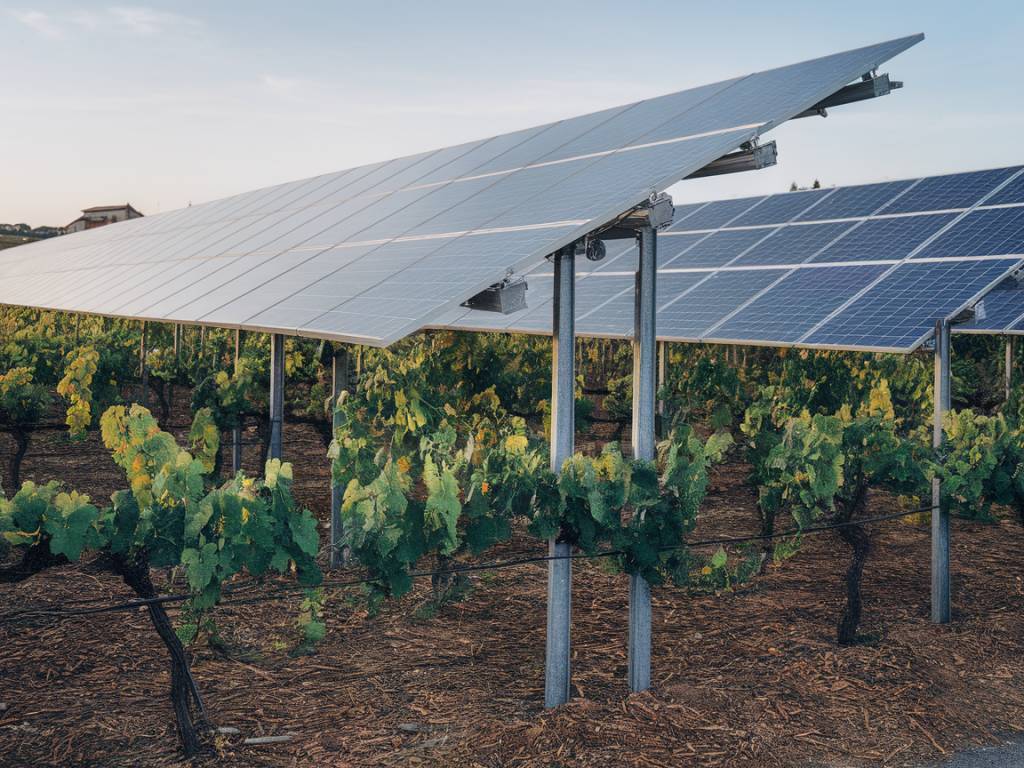What is Agrivoltaism?
Agrivoltaism, also known as agrophotovoltaics, is a groundbreaking approach that combines energy production with agricultural activities on the same land. By installing solar panels above crops or grazing areas, farmers can generate renewable energy while continuing to grow food or raise livestock. It’s a win-win scenario: efficient land use, increased sustainability, and optimization of resources.
This innovative concept is creating a buzz across Europe as it provides a promising solution to two major challenges—meeting renewable energy targets and supporting agricultural resilience in the face of climate change. But how does it work, and why should you care? Let’s dive in.
How Does Agrivoltaism Work?
The principle of agrivoltaism is simple yet ingenious. Rows of solar panels are installed at elevated heights or specific angles above farmland, allowing sunlight to reach the crops below. The panels not only generate clean electricity, but they also offer partial shading, which can help mitigate heat stress on crops during scorching summers. Modern agrivoltaic systems are designed to track the sun throughout the day, optimizing both energy production and light distribution on plants.
In practice, agrivoltaism requires a delicate balance. Crops need just the right amount of sunlight, so the panels must account for their specific growth needs. Too much shading, and the harvest could suffer. Too little, and the potential energy output may be underutilized. This is why close collaboration between farmers, engineers, and researchers is crucial to the success of these systems.
Why is Agrivoltaism Relevant in Europe Today?
Europe is at the forefront of the renewable energy transition, with ambitious targets to achieve climate neutrality by 2050. However, the continent also faces challenges such as declining agricultural profitability, land scarcity, and extreme weather events linked to climate change. Agrivoltaism addresses these issues head-on by allowing dual use of land for clean energy production and farming, maximizing productivity without additional deforestation or habitat destruction.
For example, countries like Germany, France, and Italy are already piloting large-scale agrivoltaic projects. In Germany, vineyards are adopting agrivoltaism to protect grapevines from hail and heat while producing solar energy. In southern France, sheep graze beneath solar panels, benefiting from the shade while the panels keep generating electricity for local communities. These examples showcase how agrivoltaism can be tailored to different climates, terrains, and crops.
Advantages of Integrating Agrivoltaism
What makes agrivoltaism such an attractive option for farmers and energy developers? Let’s break down the main benefits:
- Dual Land Use: Agrivoltaism optimizes land use by combining two essential activities—farming and energy generation. This is especially valuable in regions where arable land is scarce.
- Increased Income Streams: Farmers can diversify their income by selling the electricity generated by solar panels, reducing their dependence on volatile agricultural markets.
- Climate Resilience: The partial shading provided by solar panels protects crops from extreme heat, while panels themselves serve as windbreaks during storms.
- Reduced Water Evaporation: Shading reduces the amount of water lost to evaporation, conserving an essential resource in times of drought.
- Boost in Renewable Energy Capacity: By integrating solar panels with agriculture, Europe can expand its renewable energy output without competing with food production.
Challenges and Limitations to Overcome
While agrivoltaism holds immense promise, it’s not without its challenges. Installing solar panels on farmland requires significant upfront investment, which can be a barrier for small-scale farmers or those unfamiliar with renewable energy technologies. Additionally, not all crops or livestock are suitable for agrivoltaic systems, and the technology requires careful adaptation to specific agricultural contexts.
Another key consideration is community acceptance. Local stakeholders need to be actively involved in planning and decision-making to ensure agrivoltaic projects align with their needs and priorities. Missteps in community engagement could lead to resistance, even when the environmental and economic benefits are clear.
Lastly, inconsistent policies across European countries can complicate the expansion of agrivoltaism. While some nations offer incentives for merging agriculture and renewable energy, others lack the regulatory framework to support such initiatives. This patchwork approach highlights the need for cohesive policy measures at the EU level.
Future Prospects for Agrivoltaism in Europe
The future of agrivoltaism in Europe looks bright, driven by ambitious climate goals and technological innovation. Research institutions across Europe are testing new designs, such as semi-transparent panels that allow even more sunlight to reach the crops underneath. Meanwhile, governments are starting to recognize the potential of agrivoltaism by integrating it into renewable energy strategies and offering subsidies for pilot projects.
One particularly exciting development comes from the Netherlands, where floating agrivoltaic farms are being tested on irrigation ponds. These systems maximize land efficiency even further, demonstrating that agrivoltaism can adapt to a variety of environments.
If properly supported, agrivoltaism could become a cornerstone of Europe’s transition to a green economy. By addressing both food security and energy needs, it offers a transformative vision for sustainable living in the 21st century.
How Can You Support Agrivoltaism?
As an individual, you might be wondering how to make a difference in the expansion of agrivoltaism. Supporting this innovative solution can take many forms:
- Stay informed about agrivoltaism and share its potential benefits with your community. Awareness is the first step to action.
- Advocate for policies that encourage renewable energy integration, such as agrivoltaic subsidies or streamlined regulatory processes.
- Support local farmers who adopt green technologies by purchasing their products and promoting their efforts.
By championing agrivoltaism, you’re not just investing in greener energy—you’re taking a stand for sustainable agriculture and a more resilient planet.
